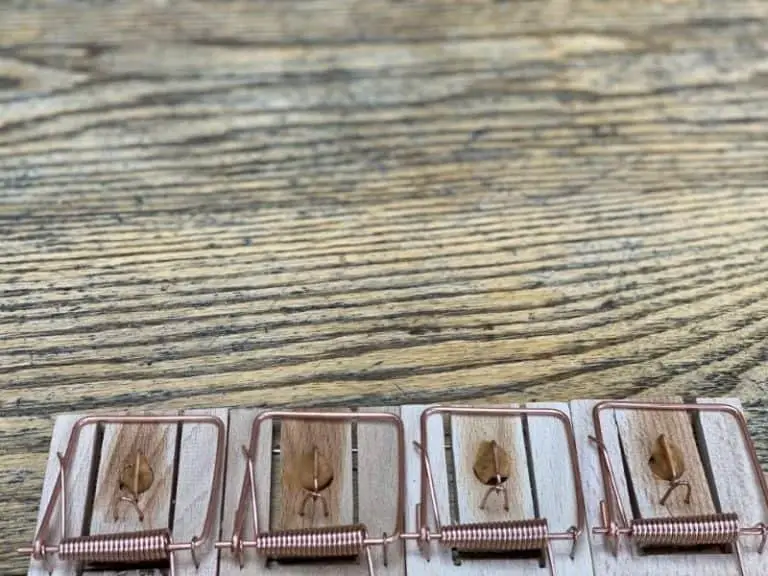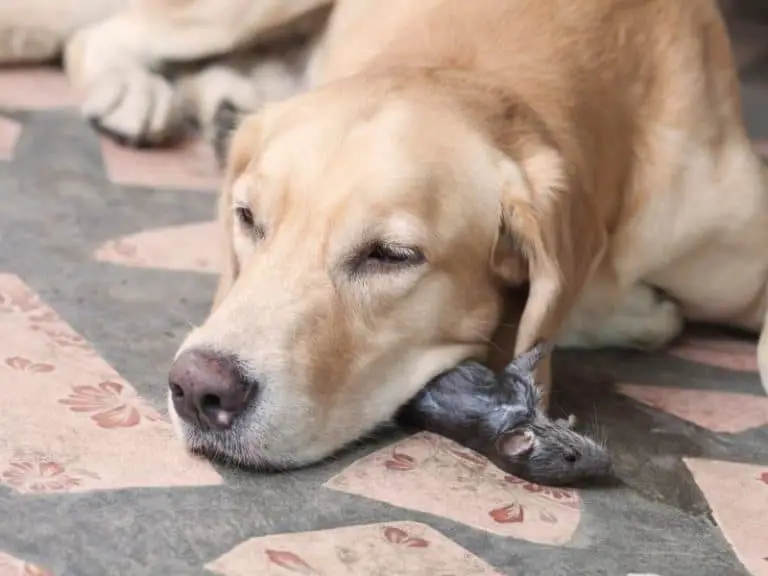How To Know For Sure How Many Rats Are in Your House
Here’s a common question I get a lot from my clients, “I found a rat in my house is there more?” That’s a very good question and I’m glad that some folks are concerned about rat presence in their home. Some folks think that once they catch and kill a rat, the problem is over. On the contrary, it’s just starting.
If you find even one rat in your house, it means there’s more of them hiding. Even if you were able to catch and kill the rat, don’t be too confident in thinking that the problem is over. Finding all rats means assessing certain areas in your home for possible rat infestation.
Read on to learn more about the places where you can find rat infestation in your home.
Here’s What To Do If Found One Rat In Your House
1. Check Air Ducts for Rat Infestation
Rats feel at home in the ductwork of your home.
The fact that it’s an area of your home that’s often overlooked makes it a lot easier for them to take residence. Rats just need to find a hole in the ductwork to find their way in.
Once they find their way in, it becomes a very convenient place for them since it can serve as a pathway to get to the other areas of your home.
The ductwork is also the perfect refuge for rats to stay warm. So, as winter approaches rats are most likely to look for holes in the ductwork of any home.
It’s for that reason you should check your ductwork for rat infestation. You can do that by turning off the system and monitoring the smell that’s coming from the vents.
If there’s a pungent odor coming out from the vents, then the ductwork is most likely infested with rats. The pungent odor is most likely coming from the rats’ droppings and urine.
The sooner they’re cleaned out, the better. Rats shed a virus in their droppings, urine, and saliva. The virus could be transferred by simple inhalation.
So, be careful with the odor because it’s not safe to inhale it. It’s a lot safer to seek professional help to check, clean, and sanitize ductwork.
2. Investigate Drains and Sewers for Rats
If you want to know where rats hide in your house, then investigate your drains and sewers. These are areas where rats are most likely to be found.
Rats use manholes to enter the drains and sewers of a home. So, if your neighbors have a rat infestation problem, then you’re most likely to have that same problem since rats can enter your drains and sewers through manholes.
Since they can squeeze themselves in small spaces, they won’t hard time traveling through your pipes.
They can end up gnawing through the flexible pan connector at the back of the toilet and chew the rubber seals, which can cause some water leakage.
When that happens, you not only have a rat problem but a plumbing problem as well. To stop rats from getting into your drain, I recommend Stainless Steel Ratwall (Amazon).
This machine fits right through the drain pipe. It comes with a mounting pole so that you won’t have to use your hand to insert it.
Once you install the Stainless Steel Ratwall, it’s going to block rats from coming in through your drain pipes.
3. Check The Kitchen Since Rats Love to Hide There
There’s nothing more disgusting than knowing rats are hiding in your kitchen. This is, after all, your cooking area and it has to be clean and sanitized all the time for your family’s safety.
Unfortunately, this is one of the areas in your home where rats are most likely to feel right at home. You probably know by now that rats are very elusive creatures.
They will run away at the sight of people. So, you might wonder why would they even risk hiding in the kitchen when it’s one of those areas in your home with heavy traffic.
The reason for that is because of food. They will risk anything for food.
So, once you find a rat in your home, go to your kitchen and check the cupboards and stove. Check underneath your refrigerator as well. Rats love to hide there.
They can easily squeeze themselves in and wait until there is no human intervention. Furthermore, these areas are most likely to have some food crumbs.
Rats love food crumbs. Even if you don’t see a rat hiding in these areas, make sure to check for urine and droppings.
Once a rat has eaten something, it’s bound to have some sort of activity. Droppings and urine are indicators that more rats are present in your home.
Hence, is the reason why I always recommend keeping the kitchen. Make sure that all your dry foods are well-sealed so that rats won’t have any food to gnaw on while they’re in hiding.
Also, refrain from leaving left-over food on the kitchen counter. This is a sure way to attract rats.
4. Don’t Skip Areas in Between Walls
Rats are very skittish. They tend to hide in hard to reach places like in between the walls of your home.
So, if you’re wondering if there are more rats in your house, check the walls. Look out for bite marks on your walls. Rats love to chew on things and they will not spare your walls.
They can chew on the wires installed in between your walls and that could be pretty dangerous.
Aside from the fact that rats are fire hazards, their bite marks on your walls indicate that they’re building their nests.
That’s pretty much a sign that there’s more than just one rat in your house. Aside from watching out for bite marks, watch out for some greasy spots on your walls.
Rats are dirty animals and I mean that literally. When they come close to the walls, they leave behind grease.
Another thing you should watch out for are noises behind the walls. If you keep on hearing sounds, one thing is for sure. There more rats hiding behind the walls.
5. Inspect Storage Boxes
Storage boxes are great for organizing your stuff. The thing is, you tend to stow and forget them in time.
To make matters worse, you stow them in dark areas of your home. These dark areas could easily be infested with rats. What that happens, the rats end up chewing on the boxes.
Eventually, they find their way in. Then they end up making the storage boxes their home and breeding ground. Hence, if you see a rat in your house, it’s just but logical to check the storage boxes that you have stowed a long time ago.
For all you know, these boxes are already infested with rats. While the thought of seeing a box of rats is gross, you need to get it done.
However, you have to practice extreme caution as having a box full of rats is not just gross but dangerous. For starters, the rats can bite you. Also, you might end up scattering their droppings.
As you know by now, their droppings contain bacteria and viruses. My recommendation is that you seek professional help. That way, there is a safe removal of both the storage boxes and rats in your home.
6. Do Not Ignore the Crawl Spaces in your Home
Crawl spaces are designed to provide you access to the piping and utility systems of your home. They also create an insulating gap between the ground and the home.
So, if there are any holes on the exterior walls of your home, rats can easily get into these areas.
There’s a good reason why these areas are called crawl spaces. That’s because there’s not a lot of room and light in there. Crawl spaces are dark, damp, and warm areas.
It’s a paradise for various kinds of critters, especially rats. They can seek shelter in these areas and create their nest. Aside from being a home and breeding ground, rats also use crawl spaces as highways to get to the other areas of your home.
That’s why you must get a pest control specialist to check the crawl spaces of your home regularly. They can assess the area and deal with the rat infestation accordingly.
I wouldn’t recommend that you check these crawl spaces yourself unless you have proper training on pest control management.
Nonetheless, crawl spaces are one of those areas that you should focus on especially if you’re worried about rat presence in your home.
7. Examine Basement For Rat Infestation
If rats can easily get inside the crawl spaces of your home, then there’s no stopping them from getting to the basement as well. Crawl spaces aren’t the only entry points for rats.
If you’ve installed a power vent for your furnace near the basement area of your home, it could easily be an entry point for rats as well.
The basement is one of the most common places where rats hide.
In most cases of infestation, the basement is where the rats first gain entry to the house. The tight spaces, an abundance of harborage points, and easy access to other areas in the home make the basement a convenient domicile for rats.
They all encourage rat activity. The rats will love the basement even more if it’s dark and damp. They’ll feel right home in it and in no time, create their nest.
You could do a quick check on the basement to check for rat activity and infestation. The question is, what can you do about it?
Rat infestation in the basement requires more than just DIY solutions. If you want to eradicate the rats in your house, it’s best to call on a pest control specialist to deal with the problem.
8. Study Droppings in The Attic
If rats can live in the basement, they can live in the attic as well. Considering how fast and easy for rats to travel within your home, there’s no stopping them from ending up in the attic.
Once a rat finds itself in the attic expect more rats to follow. There’s a valid reason for that. Rats like to leave dropping trails for other rodents to follow.
These trails tell other rodents how to access the attic. Since rats are neophobic, they have to travel the same pathway every day.
By following the droppings, they know exactly the safe way to travel. So, if you need to check your attic for rat infestation, make sure to keep a close eye on the droppings.
Aside from keeping a close eye on the trail of droppings, make sure to check if any holes could serve as an entry point to the attic.
Keep in mind that no hole is too small for a rat. The rule of thumb is, if your thumb can fit through any one of the holes, then a roof rat will be able to squeeze right through it.
9. Eliminate The Garage From Rat’s List
The garage is another safe shelter for rats. If you don’t do anything about their presence in the garage, it will be pretty easy for them to transfer inside your home.
They’re pretty much just a few steps away from it. So, if you’ve caught a rat in your house don’t think for one minute that there aren’t anymore.
Check your garage for rat infestation. For the most part, you can do something to reduce the number of rats living in your garage.
Unfortunately, it’s almost going to be impossible to keep your garage free of pests. The garage is definitely not an ideal place for rat exclusion.
Since it’s wide open most of the time, it’s pretty much a huge entry point for rats. However, you can do some things to lessen the presence of rats in your garage.
One of which is to avoid storing stuff like old beddings, cardboards, sleeping bags, and insulation.
These are ideal hiding places for rats. They can be chewed on and used as nests. You should also avoid storing food in your garage as this will attract more rats.
10. Declutter
If your home is full of piles of clutter, then you’re most likely to have a rat infestation. As it is, even the cleanest home can get infested by rats. What more home with piles of clutter all over?
Piles of clutter provide more areas for rats to hide. Hence, it’s critical to keep your entire home clean. Stow your things properly. Make sure there aren’t any bread crumbs on the floor.
Avoid eating in your bedroom. These are simple ways to keep the rats away. Truth be told, it’s not enough.
While rat trapping seems to be simple at the start, it ends up being a lot more complicated once you get about halfway through it. There are times when you will realize that it might just be too late.
If you really want to know if there are any more rats in your home, you need to get with a pest control specialist. Only a pest control specialist can properly assess a possible rat infestation in your home.
They can assess the travel patterns of the rats and most identify all points of entry. Most importantly, they have the right equipment and procedure for rat infestation removal.
When it comes to rat infestation, it’s not enough that you resort to doing a couple of DIY solutions.
You may be able to catch a number of rats but that won’t stop you from wondering if there are any more in your home.
Only a pest control specialist can deal with a rat infestation. However, you need to keep in mind that not all pest control experts are created equal.
By that I mean some pest control experts might miss a hole or two which could lead to a rat infestation in the future.
Hence, choosing the right pest control expert is critical. Keep in mind that eradicating rats is not an overnight thing.
So, if a pest control specialist tells you that the job can be done in just a matter of hours, then he’s most likely to miss a lot of critical things.
Furthermore, the pest control specialist needs to do some environmental and structural inspections after the removal of rat infestation. That way, there are fewer chances of rats coming back to your home.
Calling on a pest control specialist is not a one-time thing. If you want to eradicate rat infestation, you might want to consider a monthly treatment of your home.
This is what I would normally recommend ensuring that the situation is under control. If it is, consider bi-monthly treatments. That way, there are fewer chances of finding a rat in your home.
Most importantly, you’ll never have to worry about how many rats there are in your home.
Photo credit: ©canva.com/imagesource
Medical Disclaimer: TheHomePestControl is a digital publisher and does not offer personal health or medical advice. The contents of this website are not intended to substitute for professional medical advice, diagnosis, or treatment.
Affiliate Disclaimer: As an Amazon Associate, I earn from qualifying purchases made on our website. If you make a purchase through links from this website, I may earn a commission at no additional cost to you.






